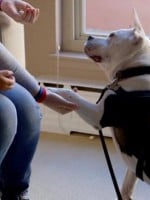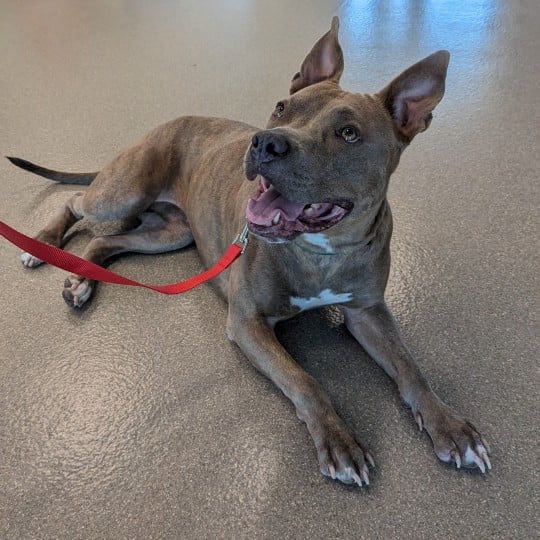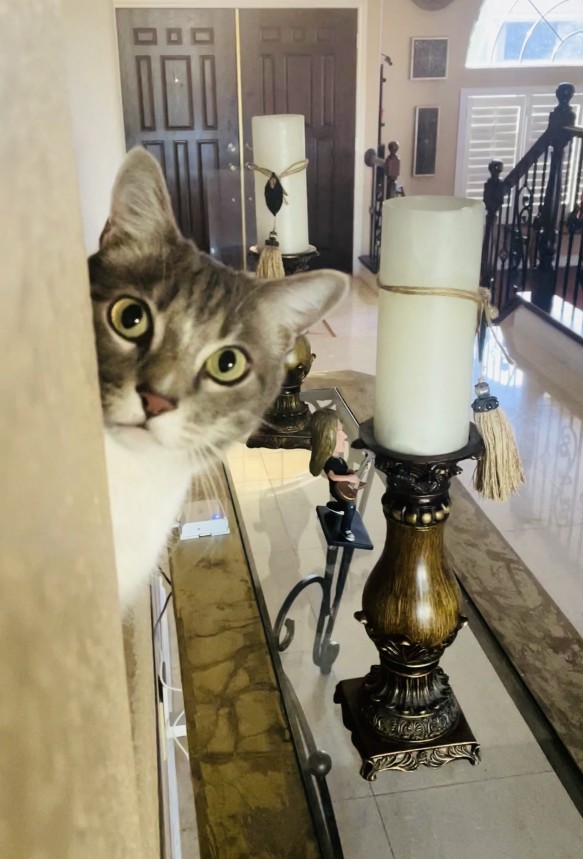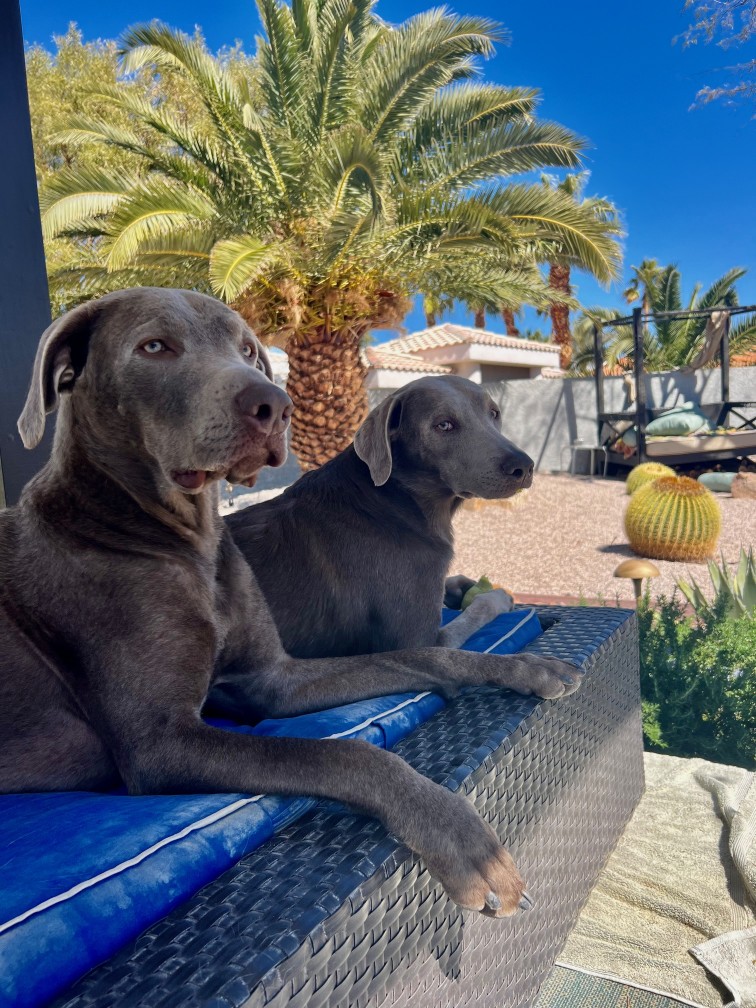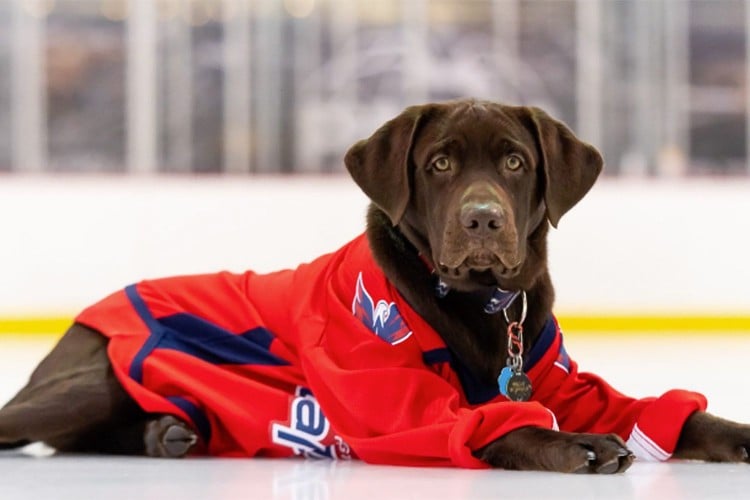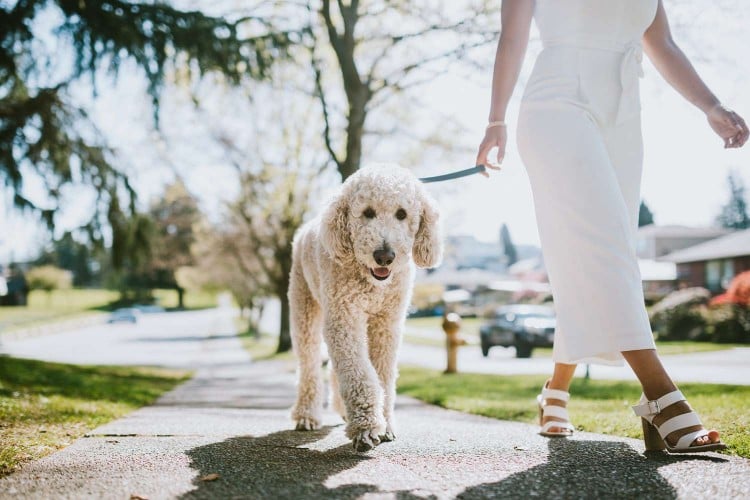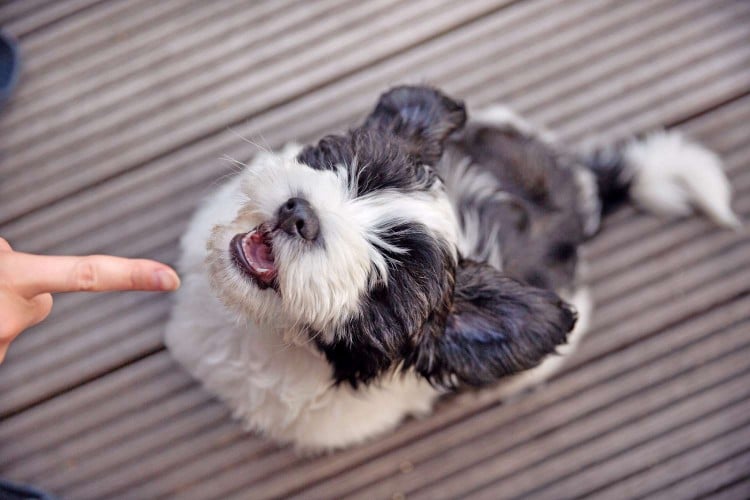
Regardless of whether you have a 10-week-old puppy or a 10-year-old cat, your pet can learn all sorts of important cues—signals that communicate something you want them to know or do. Cues come in all forms, from verbal cues like "sit" or "come" to visual signals like a pointed finger or picking up a leash. Your pet can even learn cues you didn't mean for them to, like the jingle of your keys or the creak of a door opening. How you use a cue is critical to consider when you want to teach your pet any skill. Paired with positive reinforcement, cues can help you communicate effectively with your pet during training sessions and in everyday life.
What is a Cue and How Do We Use One?
How are Cues and Commands Different in Pet Training?
Positive reinforcement trainers, like myself, tend to avoid the term "command." It's considered outdated and holds a much different meaning than "cue."
Commands imply there's no choice and could indicate force is being used. Consider how we use the word in human language. If your boss said to you, "I command you to get this done today," how would you react? We give the title "commander" to a person who can exercise extreme control over others. When someone commands you to do something, and you don't, you likely face punishment.
Cues enable our pets to make choices, and they encourage learning. We teach cues, and use them in situations where we know our pet can be successful. Our pets learn to enjoy cues because they understand that cues tell them they can get opportunities for good things. When cued behaviors have been learned through using positive reinforcement, our pets start to offer those behaviors, meaning they do them without us asking, and are able to navigate situations and make good decisions without help (our goal for our teenagers, right?).
Making Sure Your Cue Isn't Confusing for Your Pet
It's not uncommon for pet parents to create accidental cues that later end up causing confusion. Pet owners think they are giving one cue but are actually giving another, or multiple, or none at all.
For instance, I onced helped a new puppy owner understand why every time they asked their puppy to get off their brand new couch, the puppy appeared to lay on it with even more enthusiasm. I observed the owner with their brilliant puppy for a while, including watching them do a quick training session and then just playing in the living room. The new owner had taught their puppy all sorts of things, including cues for sit, down, and stay. Their cue for "down" caught my eye immediately. They taught their pup to lie down using a visual cue, a downwards pointed finger. But when the pup would jump up on the new couch the owner would say "off" and point their finger to the ground. A-ha! That pointed finger looked exactly the same as the cue for "down." The puppy was so confused, thinking they were doing exactly what the owner taught them. The word "off" was never taught and had no meaning whatsoever to the pup but the pointed finger did and that was the thing the puppy responded to.
When Cues Go Wrong
A pet can learn that some cues don't have pleasant meanings, too. This is especially true when our pets are taught things through fear or pain. Dogs that find walks riddled with scary things are quick to associate their collar or leash with the frightening events that can occur during walks. A cat might find their kennel unsettling if it's only used when going to the vet. Yell at your dog repeatedly when they bark at other dogs, and I can guarantee you it will only make the problem worse.
Poisoned cues, or cues that have been ruined, are a common reason for a pet that doesn't respond to an owner (again, your dog is not stubborn!). The most common poisoned cues are a pet's name (especially dogs) and the cue to come when called. The cue becomes associated with something unpleasant. We don't think about it, but we frequently say our dog's name and then things they don't like happen: a bath, a trip to the vet, or a scolding (avoid at all times!). Over time, responding to their name can be scary or uncomfortable. In the case of recalls (come), you say "Buddy, come!" and then leave the dog park. Or you yell "come" and then your dog has to leave a game of chase with the neighbor puppy. If you don't follow up with a treat or something else good, coming when called means something bad. Poisoned cues can be avoided when you continually use positive reinforcement.
Cues don't work better when repeated, either. If you say the word "sit" over and over to get your dog to sit, the cue for sit isn't saying the word just once but instead saying the word three times or five times or however many times you always say it. This applies to your pet's name, too. I can't even count how many times I have worked with a dog owner who repeats their dog's name so much in training sessions that the name has just become white noise—it's lost value.
Cues must be also practiced in all the situations in which they might be used. Our pets aren't always great at generalizing so you can't just assume they understand what you mean when you say "shake" or "roll over" at the park if you never spend time practicing at the park.
How Do You Teach a Cue?
During training, cues are not added until your animal already begins performing the behavior. We build the behavior before we give it a name (a cue). In positive reinforcement training, using a marker and really good reinforcers (like treats or yummy food pieces) help your animal to learn the cue quickly. Make sure you don't confuse a marker and a cue, though! A marker tells your pet the moment or behavior that earned them a reinforcer. It's as if you are saying to them, "THAT is it!" A cue is a signal that tells your animal it will be reinforced when they perform the behavior you asked.
When we can reliably predict our animal will perform the behavior we then can add the cue right before the behavior occurs. Our animals are most likely to repeat the last thing they did that earned them a reinforcer and after several repetitions of doing that thing, they quickly learn to repeat it. For example, consider teaching your puppy to sit on cue. Using a treat lure, the pup follows the treat with their nose and sits and then gets a delicious treat. You lure them with the treat, they sit, they get the treat. Your pup will start to anticipate the moving of the treat lure and they will start to sit before the movement ends. Now you can add the verbal cue "sit" right before you begin to move the treat lure. If the pup sits, you mark, and reinforce. After several successful repetitions, the treat lure is faded and no longer needed and you just say "sit."
Communicating with our pets is easy to do when you have taught them a large repertoire of cues. It's important to remember that you want to dedicate ample time to teaching each cue before you jump to a new one. Be extra careful that you don't accidentally poison a cue or assume your dog knows one right away. With patience, consistency, and positive reinforcement you and your pet will be enjoying wonderful conversations.

